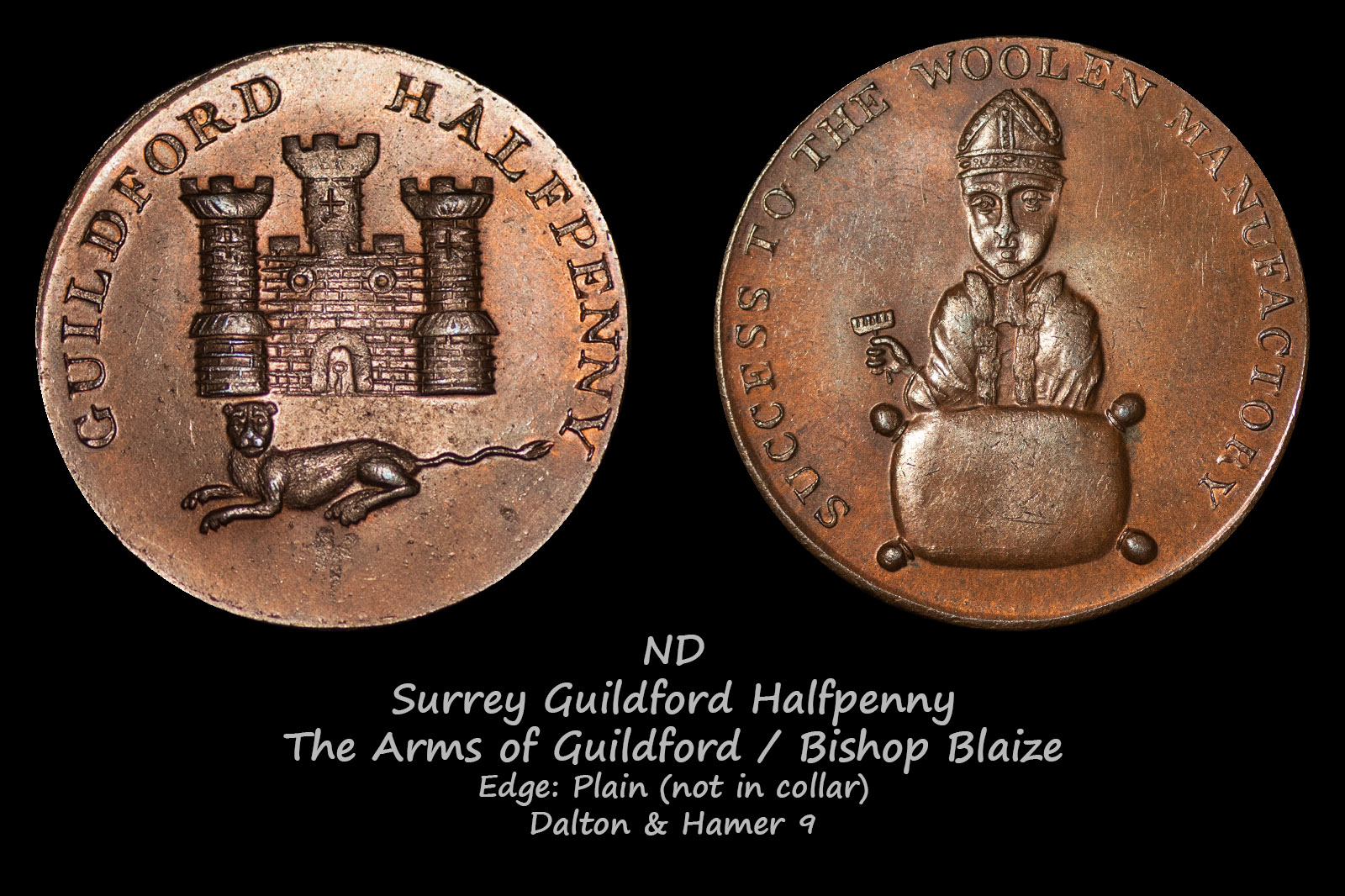
Online collections
monedastodas.com
All collections » Tokens » Guildford Halfpenny
The arms of Giuldford / Bishop Blaize
Edge: Plain (not in collar)
Dalton & Hamer: 9

On the obverse is a fragment of the coat
of arms of Guildford: a lion lying in front of a castle with three towers. Having
Saxon roots, Guildford (guilden or golden ford) was most likely named after the
golden flowers that grew along the riverside, or the golden sands of the River
Way.
In the X century, Guildford received the
status of a city. At this time, William the Conqueror was building
a network of fortified settlements throughout the country against the Danish
invaders. Guildford was surrounded by a moat and an earthen rampart
topped with a wooden palisade. With a population of only a few
hundred people, it was a thriving city with its own mint. In the
middle of the 10th century, the church of St. Mary in stone was built in the
city, the tower of which has survived to this day. In the Domesday
Book of 1086, about 900 inhabitants were recorded, which in the Middle Ages was
a sign of a large city. Typical villages had 100-150 inhabitants.
The previously built wooden castle was
rebuilt in stone in the 12th century. The main industry in
Guildford during the Middle Ages was the production of wool. In
addition, the city had the usual crafts for any medieval city: carpenters,
blacksmiths, butchers and bakers. In 1257, Guildford got its own
charter, giving the townspeople the right to choose their own government, as
well as to have their own market and fairs, which made it possible to attract
buyers from all over Surrey and North Hampshire. Although, due to
its proximity to London, trade in Guildford practically did not develop.
In the 17th century, Guildford acts
mainly as a market town for nearby villages. In 1629 Archbishop
George Abbot (George Abbot 1562 - 1633) built a trading house for weavers
suffering from a decline in the wool trade, but the enterprise failed and put an
end to the production of wool in Guildford.
In the 13th century, a monastery of
Dominican monks (also known as the black brothers, because of the color of the
cloaks they wear) appeared in the city.
The reverse side depicts Bishop Blaise, who is the patron saint of wool makers, with a comb in his hand and a bale of wool and a circular inscription: "SUCCESS TO THE WOOLEN MANUFACTORY". The image of the bishop is placed on the token as a recognition of the past achievements of the woolen manufactories that flourished in Guildford from the 14th to the 17th centuries.
The engraver and maker of the token is Thomas Prattent, who is also the co-author of the very first token catalog published in 1795 (The Virtuoso's Companion and Coin Collectors Guide).